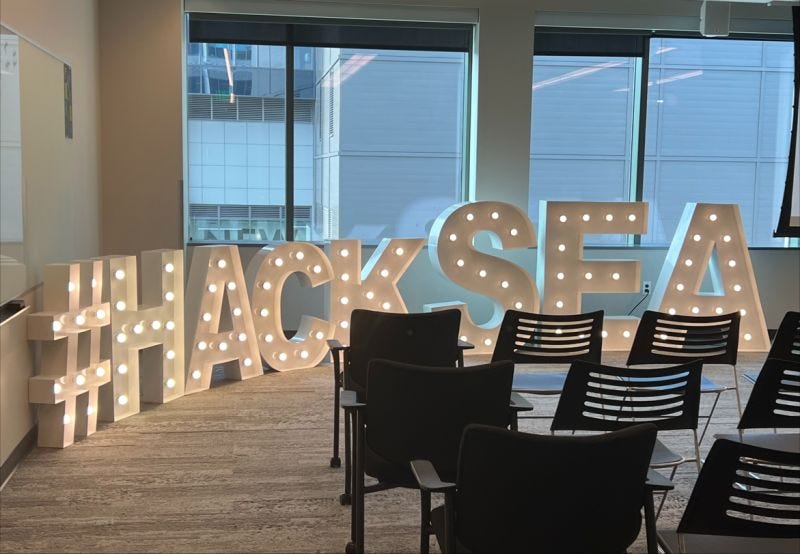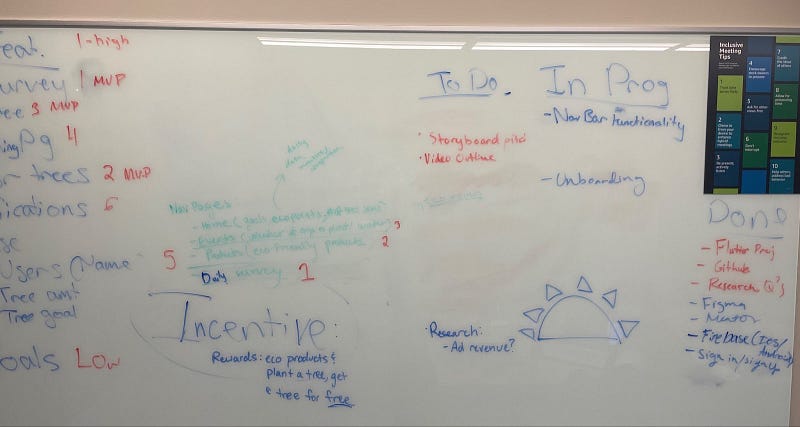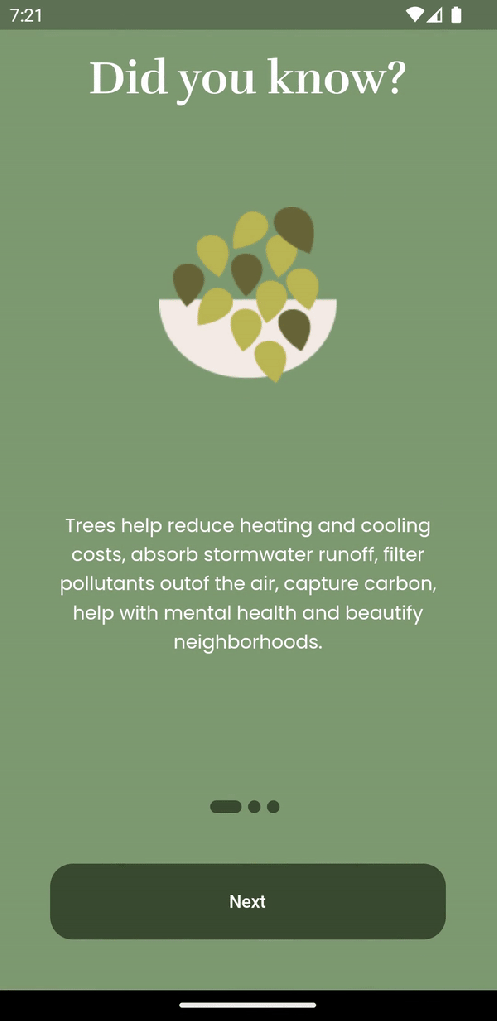Hackathon Survival Guide: Key Lessons Learned from My First Experience
 Brandon Bui
Brandon Bui
Back in October 2022, I participated in my first hackathon. Let me tell you, it was a rollercoaster of an experience. Even though we didn’t win, I learned a lot of other valuable knowledge that has helped me both academically and professionally since that experience. I hope to share that knowledge with you in this post.
You’ve probably heard the term “hackathon” if you’ve been in the field long enough, but for those unaware of what a hackathon is, no you are not going to hack anything. Generally, a hackathon is a programming competition where you come up with a product and create a sales-like pitch for that product either individually, or more commonly, in a team.
The hackathon that I participated in was HackSEA, hosted by HackathonsInternational and sponsored by Amazon. The event was two days long, over the weekend. The breakdown for the event is as follows:
A few days prior:
Orientation for the event.
Challenge options were released.
Time to network with other participants and begin forming teams.
Saturday
Work on your project and pitch
Various workshops
Sunday
Submit the project and record your pitch presentation
Awards ceremony and networking
There were two themes for this event that were focused on the environment and mental health:
How can we remove barriers to mental health professionals for students?
How can we better educate residents about tree canopy loss and its effect?
We ended up going with the second option thinking it would be the less competitive option…let’s just say we were definitely wrong.
There were three others on my team, all of whom I already knew from class. My team consisted of two “front-end developers” and two “full-stack developers” (I put quotations because none of us were professionally trained; we all just picked it up on our own and kind of fell into these roles).
We were a little surprised by the demographic of the other participants. We expected everyone to be around our age (college students) but felt that most of them were either in the industry or had recently graduated. It felt a bit intimidating given that we, a group of college students who were about 3 weeks into being actual CS majors (actually only two of us were in the CS program at that point), were competing against people who were already in the industry. However, that isn’t to say that the people there weren’t welcoming. Everyone was super friendly and we met some pretty cool people, but this was where we made our first mistake: we limited ourselves to the four of us. It was the safe option, we all knew each other’s abilities and how to work with each other. However, it also handicapped us to our own abilities; we didn’t leverage the fact that there were people there who knew a lot more than us that would’ve been happy to join us.
The general concept for our project was to create an app that encourages users to engage in eco-friendly activities while also educating them on the importance of trees in the city. Our plan was to encourage users to engage in these activities by finding eco-friendly products that we could use as incentives. We spent the first hour or so going over the design and requirements. We wanted to define a set of features that we considered our minimum viable product.
 |
| Our Design Requirements/Kanban Board Mashup |
We definitely felt a bit in over our heads. We had less than 36 hours to create an entire app…or so we thought, queue in mistake number 2: we were trying to make an ENTIRE app; front-end, back-end, and a database. We didn’t need all of that, at least not for this hackathon. I spent the majority of the first day trying to get Firebase setup and various backend API’s that weren’t necessary for making a pitch for that app.
By the end of the first day we had completed a respectable looking onboarding sequence (again probably was unnecessary) and began the framework for the bulk of our app. We all decided that we were going to work through the night from home, get a few hours of sleep, and then get back to work early the next morning.
 |
| Our Onboarding Sequence |
And Then There Were Two…
Sunday morning I got a message that two of my team members wanted to work from home that day. Not a big deal but it wasn’t the plan, it would have been nice to have had them there in person. We decided that the two of us who were there would continue finishing out the app and then the other two would work on our pitch presentation. Here was mistake number 3: we waited until the second day to start our pitch. We did not realize how much work the pitch would take to create, the two members who were creating the pitch had roughly five hours. It wasn’t that they were bad workers, there was just a lot of content that we needed to cover and prepare for.
Conclusion
We ended up creating a decent app for the amount of time that we spent working on it; it definitely was not our best work but it wasn’t horrible. Our pitch presentation wasn’t too shabby either. It was my first time doing a pitch like this to “investors” so I wasn’t too sure what to expect, but it turned out well.
In the end, we didn’t end up placing for the event, but we walked away with a lot of valuable knowledge and some new connections on LinkedIn.
Lessons Learned
Take Advantage of Networking Opportunities
My team ended up limiting ourselves to just the four of us because we already knew each other and were comfortable working with each other. However, there were a ton of people at the event that we could have teamed up with. Especially since it was such a short event, it wouldn’t have hurt to have more people to work with.
Focus on the Portions of the App that Matter
We had spent the majority of our first day focusing on creating the back-end of our app. We spent hours setting up our sign up/sign in and troubleshooting Firebase issues alone. We didn’t need any of this, especially since no one was going to use the app immediately. There were teams who did better than us that got away with Figma animations and here we were trying to create a full fledged app. Looking back, we should have focused on developing a front-end that would have aided us in selling our idea, not trying to do both in parallel. I would recommend analyzing and understanding what the requirements of your event is. Sure, some events do require teams to make a full fledged product, but others simply want developed ideas and concepts.
Allocate Enough Time to Prepare Your Pitch
We thought that setting aside the second day would be enough to create our pitch. Let’s just say that we were mistaken. It came down to the wire when we had to submit our pitch video. I would recommend, if possible, dedicating someone to just doing the pitch, especially if it is a shorter competition. A well crafted pitch could make or break the event.
I hope that I was able to leave you with some sort of helpful information for your first or next hackathon.
-Brandon
Originally published at https://brandonbui.me on March 3, 2023.
Subscribe to my newsletter
Read articles from Brandon Bui directly inside your inbox. Subscribe to the newsletter, and don't miss out.
Written by

Brandon Bui
Brandon Bui
Almost finished with my degree in computer science and software engineering, and working in application security.